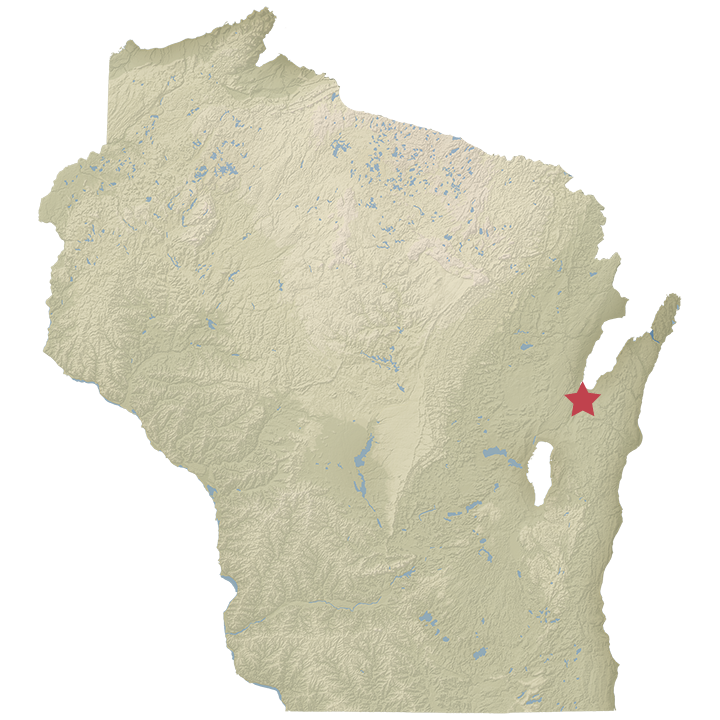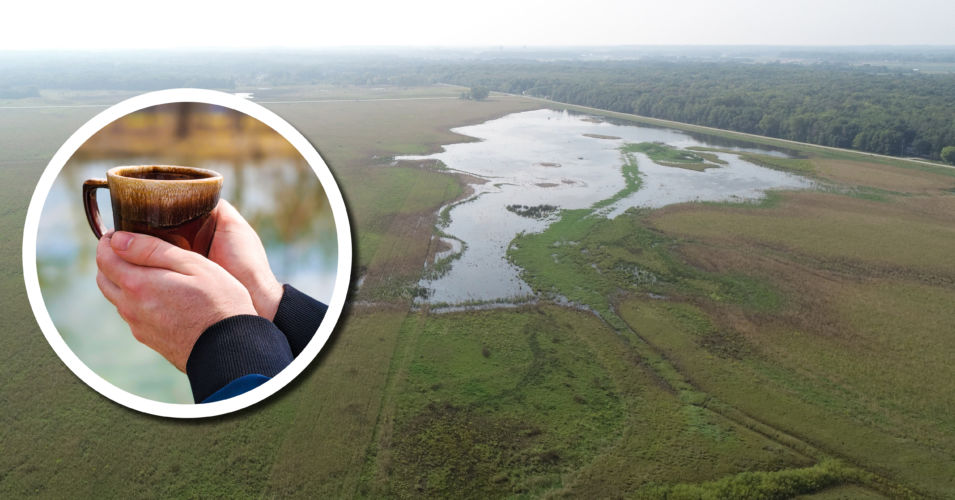
The Oneida Nation of Wisconsin Reservation Map: A Living Tapestry of History and Identity
The Oneida Nation of Wisconsin reservation map is far more than a mere geographical outline; it is a profound historical document, a testament to enduring identity, and a vibrant blueprint for the future. For the discerning traveler and history enthusiast, understanding this map offers a unique window into the resilience, sovereignty, and ongoing cultural life of the Oneida people. This article delves into the layers of meaning embedded within the Oneida reservation map, tracing its origins from ancient homelands to its contemporary significance.
Roots of Resilience: The Haudenosaunee Legacy
To truly comprehend the Oneida Nation of Wisconsin, one must first look eastward, to the verdant valleys and Finger Lakes region of what is now central New York. Here, centuries before European contact, the Oneida (Onyota’a:ka, "People of the Standing Stone") emerged as one of the original five nations of the Haudenosaunee Confederacy, also known as the Iroquois Confederacy. Alongside the Mohawk, Onondaga, Cayuga, and Seneca, and later joined by the Tuscarora, the Oneida were architects of a sophisticated democratic system, the Great Law of Peace (Kaianere’kó:wa), which profoundly influenced early American political thought.

Their ancestral lands were vast, encompassing forests, rivers, and fertile plains, where they cultivated the "Three Sisters" (corn, beans, and squash), hunted, fished, and engaged in extensive trade networks. Their identity was inextricably linked to this land, a sacred trust passed down through generations, defining their spiritual beliefs, social structures, and language. The original Oneida map was not drawn on paper, but etched into the collective memory, a living landscape of their existence.
A Pivotal Choice: The American Revolution and its Aftermath
The arrival of European powers in North America irrevocably altered the landscape for the Oneida. Caught between competing colonial ambitions, the Haudenosaunee Confederacy faced an existential crisis during the American Revolution. While most of the Confederacy allied with the British, the Oneida, influenced by figures like Samuel Kirkland, made the fateful decision to side with the American colonists. This choice, rooted in complex relationships and promises, came at an immense cost.
Oneida warriors fought bravely alongside American forces, often acting as scouts and spies, and even providing critical aid to George Washington’s starving troops at Valley Forge. However, the promise of gratitude and respect for their land was quickly forgotten. Post-Revolution, the victorious United States, hungry for land, began a relentless campaign of encroachment. Despite their loyalty, the Oneida found their lands coveted by a rapidly expanding American population, leading to a series of coercive treaties and devastating land cessions.

The Oneida’s experience was a stark reminder of the fragile nature of treaties and the often-unilateral power wielded by the U.S. government. Their New York land base, once extensive, dwindled to a fraction of its former size, leaving many Oneida without viable means of subsistence. This period marked the beginning of a profound displacement, setting the stage for their eventual relocation.
The Long Journey West: Forced Removal to Wisconsin
By the early 19th century, the pressure on the remaining Oneida lands in New York became unbearable. The "Indian Removal" policies of the U.S. government, exemplified by the Indian Removal Act of 1830, sought to push Native nations westward, clearing the path for Euro-American settlement. While not as widely publicized as the Cherokee’s "Trail of Tears," the Oneida also endured a forced migration, a journey fraught with hardship and uncertainty.
Between 1821 and 1838, through a series of treaties, segments of the Oneida Nation began to relocate to Wisconsin, alongside other New York tribes like the Stockbridge-Munsee and Brothertown. They purchased land from the Menominee and Ho-Chunk (Winnebago) nations, establishing a new homeland near the Fox River, west of what would become Green Bay. This move was not voluntary in the true sense but a desperate attempt to secure a future for their people, to preserve their identity and culture on new ground.

The initial Oneida reservation in Wisconsin was significantly smaller than their ancestral lands, but it represented a new beginning, a place where they could re-establish their communities and traditions. The act of drawing boundaries on this new map was not just an administrative task; it was an assertion of their will to survive, to maintain their distinct identity as a sovereign nation.
The Oneida Nation of Wisconsin Reservation Map: A Checkerboard of Resilience
Today, the Oneida Nation of Wisconsin reservation map reflects this complex history, showcasing a unique and often challenging land pattern. Unlike the contiguous blocks of land one might associate with a state park or a national forest, many Native American reservations, including Oneida’s, feature a "checkerboard" land ownership pattern. This is a direct legacy of the General Allotment Act of 1887, also known as the Dawes Act.
The Dawes Act aimed to assimilate Native Americans into mainstream American society by breaking up communal tribal lands into individual allotments. Any "surplus" land after allotment was then declared open for non-Native settlement. For the Oneida, this policy was devastating. Much of their land was allotted to individual tribal members, and when those individuals died or faced economic hardship, the land often passed out of tribal hands through sale to non-Natives. This dramatically reduced the amount of tribally controlled land and created a fragmented land base.
The contemporary Oneida Nation of Wisconsin reservation map, therefore, illustrates not just the external boundaries recognized by the federal government, but also the internal complexities of land ownership. Within these boundaries, one finds a mix of tribally owned land (held in trust by the federal government for the benefit of the Nation), individual Native American allotments, and privately owned land by non-Natives. This checkerboard pattern presents unique challenges for governance, resource management, and economic development, yet the Oneida Nation has actively worked to overcome these obstacles.
Over the past century, the Oneida Nation has diligently pursued a land recovery program, purchasing back parcels of land within its reservation boundaries as they become available. This effort is not merely about acquiring real estate; it is a profound act of self-determination, an assertion of sovereignty, and a tangible step towards re-establishing a contiguous land base vital for cultural preservation and future prosperity.

Identity Forged in Place: Cultural Significance of the Map
The reservation map, with all its historical complexities, remains the anchor of Oneida identity in Wisconsin. It is the physical manifestation of their sovereignty – the inherent right to govern themselves. Within these boundaries, the Oneida Nation exercises its governmental powers, operates its own police force, courts, health services, and educational institutions. This self-governance is not merely administrative; it is a cultural imperative, allowing the Nation to chart its own course based on its values and traditions.
The map defines the territory where the Oneida language (Onyota’a:ka) is being revitalized through immersion schools and cultural programs. It delineates the spaces where traditional ceremonies are held, where the "Three Sisters" are once again cultivated in community gardens, and where the stories of their ancestors are passed down to new generations. The land itself, despite its altered form, remains sacred, a connection to the Creator and to their ancestors.
The Oneida Nation Cultural Heritage Department, the Oneida National Museum, and various community centers located within the reservation boundaries serve as vital hubs for cultural preservation and education. They are living testaments to the fact that identity is not lost through displacement, but transformed and strengthened through resilience and determination.
Economic Self-Determination: A Path Forward
In recent decades, the Oneida Nation of Wisconsin has become a leading example of economic self-determination among Native American tribes. Leveraging their sovereign status, they have developed a diverse economic portfolio, prominently featuring the Oneida Casino and various other enterprises, including hotels, convenience stores, and manufacturing facilities.
These businesses, strategically located within or adjacent to the reservation, generate revenue that is directly reinvested into the community. This economic success funds essential services – healthcare, education, elder care, housing, and infrastructure – that the federal government historically failed to provide adequately. Crucially, it also fuels the land recovery program, allowing the Nation to buy back parcels of land, thereby strengthening their sovereign land base and future economic stability.
The map, in this context, becomes a map of economic opportunity and self-sufficiency. It illustrates how a land base, however diminished, can be a foundation for rebuilding a nation, fostering prosperity, and creating opportunities for its members.
For the Traveler and Educator: Engaging with the Map
For those interested in history, culture, and responsible travel, the Oneida Nation of Wisconsin reservation map invites a journey of discovery. It encourages visitors to look beyond the superficial and engage with a living, breathing culture.
Respectful Engagement: When visiting the Oneida Nation, it is crucial to remember that you are entering a sovereign nation. Respect for their laws, customs, and privacy is paramount. Always seek permission before photographing individuals or participating in ceremonies.
Educational Opportunities: The Oneida Nation offers numerous avenues for learning. The Oneida National Museum provides a rich historical overview, from their New York origins to their contemporary life in Wisconsin. Cultural events, powwows, and public programs offer immersive experiences into Oneida traditions, music, and dance. Exploring the reservation means encountering historical markers, community gardens, and the architectural expressions of a thriving nation.
Understanding the Landscape: Drive through the reservation, and you will see the checkerboard pattern firsthand – tribally owned businesses next to private residences, alongside restored natural areas. This visual lesson powerfully conveys the historical impact of U.S. policies and the ongoing efforts of the Oneida to reclaim and manage their lands.
Conclusion
The Oneida Nation of Wisconsin reservation map is an extraordinary document. It is a palimpsest, bearing the faint outlines of ancestral lands, the scars of broken treaties, the resilience forged in forced migration, and the vibrant contours of a self-determining future. For travelers and history enthusiasts, it serves as an indispensable guide not just to a physical location, but to the enduring spirit of a people.
To understand this map is to appreciate the profound connection between land, identity, and sovereignty. It is to recognize the ongoing journey of the Oneida Nation of Wisconsin – a journey of survival, cultural revitalization, and self-determination – etched not just on paper, but in the heart of their community and the landscape they call home. It reminds us that history is not static, but a dynamic, living force that continues to shape the world around us, and that the maps we draw are reflections of both our past and our aspirations for the future.


